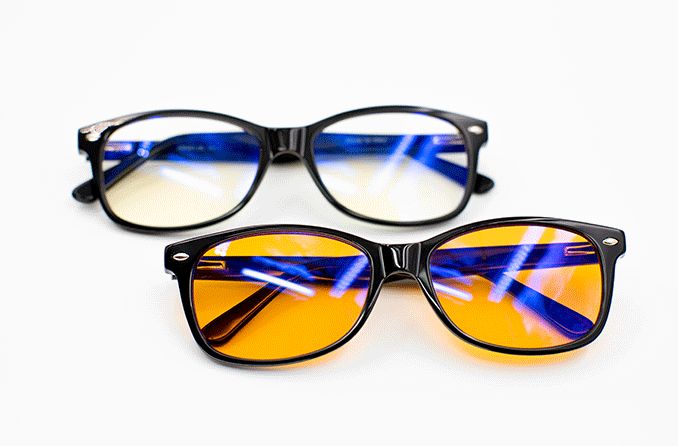What is LED light?
An LED light is a light-emitting diode (LED) that produces a narrow band of visible light when an electric current passes through it. LEDs are common light sources for artificial lighting and electronic screens because they are energy-efficient, affordable and sturdy.
An LED light contains a material called a semiconductor, which gives off visible light when an electric current flows through it. The semiconductor (the diode) determines the color of the LED light. Blue, red and green LEDs, often combined with other materials such as phosphor, can produce a full spectrum of colors.
LEDs have become the most common source of artificial lighting. Incandescent and fluorescent light bulbs have fallen in popularity.
Incandescent light bulbs produce light with a filament that heats up, making them less efficient.
Compact fluorescent light bulbs (CFL) contain mercury gas that gives off ultraviolet (UV) light when electricity passes through it. The UV light is then absorbed by a phosphor coating, emitting visible light. Fluorescent light bulbs are not as energy efficient or long-lasting and contain toxic materials.
For these reasons, LED lighting can be found in many places, including:
Traffic lights
Home and outdoor lighting
Remote controls
Computer monitors
Tablet screens
Smartphones
LED televisions
LED bulbs are cool to the touch and produce bright light using a fraction of the energy of incandescent or fluorescent bulbs.
Blue LED light is an important component of white LED light
The development of a blue LED in 2014 was a significant achievement that led to LED lighting becoming widely popular. The reason for this is that blue LED lights can be used to produce white light.
While red and green LED lights had been around for decades, LED blue light was difficult to produce — until researchers from Japan made this a reality. It was such a remarkable development that the scientists behind it were awarded the 2014 Nobel Prize in Physics.
One way to create artificial white light is to combine the output of three single-colored LEDs — a blending of red, green and blue LED light sources. The semiconductor material determines the color of the LED. But this is expensive and somewhat difficult to accomplish.
Artificial white light can also be made by combining blue LED light with low-energy yellow phosphor. For example, a bulb may contain blue LED light that excites the yellow phosphor, and the colors combine to form white light.
SEE RELATED: Red-light therapy: Damaging or helpful for the eyes?
LED light as an artificial light source
A 15- or 20-watt LED bulb can produce the same brightness level as a 100-W incandescent bulb. LED bulbs break less easily, emit little heat and can last thousands of hours. They have also become much more affordable over the past few years. These bulbs emit light in one direction rather than all directions, which can be helpful for task lighting.

Light-emitting diode (LED) with individual parts and structure.
LED lights are described by their color and the Kelvin (K) system of “color temperature.” For example:
A bluish-white light resembling daylight will have a color temperature of about 6,000K.
A cool white light will have a color temperature of about 4,000K.
A warm white LED light (which produces a reddish tone) will have a color temperature of about 3,000K.
One benefit of old-school light bulbs — incandescent bulbs — is that they emit warmer, more “balanced” light from the visible spectrum. Colors that are seen in incandescent lighting appear similar to how they would in sunlight.
Scientists have continued to experiment with and create an affordable white LED light that is closer to natural daylight. They have done this by utilizing other materials, such as red phosphorus.
This helps to create full-spectrum LED lights that more closely resemble natural sunlight and have a color temperature of about 6,500K. It has many applications, including plant lights for indoor growing.
LED light in electronics
Another reason the development of LEDs has been revolutionary is that it has enabled companies to produce relatively inexpensive and sturdy electronic screens.
An LED screen has an arrangement of very tiny red, green and blue light-emitting diodes. When an electrical current passes through these miniature diodes, visible light is emitted.
The combination of red, green and blue produces millions of colors. White light is produced when the red, green and blue diodes are all switched on. When the screen is black, these diodes are switched off.
Because they are sturdy and fairly inexpensive, LED screens are used in many devices, including:
Televisions
Computer monitors
Smartphones
Tablets
Vehicle dashboards
Effects LED lights can have on the eyes
With affordable and energy-efficient LED light sources becoming more readily available, there has been concern about the effect these lights can have on the eyes.
White light produced from blue LED light is the most common. Due to this, the concern is typically focused on the effect of blue light — which ranges in wavelength from about 400 nanometers (nm) to 495 nm.
Remember, though, the blue light emitted from electronic screens and artificial light sources is much less than that from the sun. Even if you spend hours every day in front of a monitor and all day in an office with artificial light, sunlight is the greatest source of blue light — even indoors.
What is blue light?
Blue light — about one-third of all visible light — can be divided into two broad categories: blue-violet and blue-turquoise.
Blue-violet light is also known as high-energy visible (HEV) light. It ranges in wavelength from about 400 nanometers (nm) to 455 nm. Blue-violet light has higher energy than other colors in the visible spectrum. Due to this, researchers have investigated it for its potential negative effects on eye health.
Blue-turquoise light has a longer wavelength — from 465 nm to 495 nm. It has lower energy and has been found to have health benefits. Scientists have found that blue-turquoise light can:
Improve alertness
Boost mood
Enhance brain function and memory
Contribute to regulating the sleep-wake cycle
People with seasonal affective disorder (SAD) have shown some improvement with light therapy using blue-turquoise light.
Why is there concern about blue light?
Blue light is closer to invisible ultraviolet light than the light of other colors on the electromagnetic spectrum. It has a shorter wavelength and higher energy, for example, than red light. Because we know that UV has high energy and is known to damage the eyes, there is concern about higher-energy blue visible light and eye damage.
Blue light can pass through the cornea (clear tissue in the front of the eye) and lens and reach the retina, the tissue at the back of the eye that converts light into signals for the brain.
However, it is important to understand that UV radiation has much higher energy than visible light. Light in the visible range — including blue light — does not have the same impact on the eyes as ultraviolet radiation from sunlight.
It is possible that prolonged exposure to blue light from sources such as the sun could cause damage to the retina’s cells and cause vision issues. More studies are needed to understand whether there is any long-term cumulative damage to the retina from natural and artificial blue light.
To keep things in perspective, remember that blue light from artificial sources is minimal compared to blue light from sunlight.
LED screens
Most electronic devices use LED technology these days. Digital screens have LED lights that are red, green and blue arranged in tight rows. The most common sources of electronic blue light are smartphones, tablets and laptop computers with backlit screens.
There is no evidence that blue light from digital devices can injure the eye. Although some studies in the past have found a link between blue light and eye damage, they were not performed on live human eyes and did not use blue light from digital screens.
LED lights
While artificial indoor LED lights emit more blue light, they generally do not pose a hazard when used responsibly and for their intended purpose. According to experts, the increased risk of retinal damage from blue light is negligible compared to the risk from smoking, being overweight, heart disease and high blood pressure.
However, high-intensity exposure to blue light or very bright light from any type of source — LED, fluorescent or incandescent — has the potential to be unsafe for the eyes. In particular, LED lights with intense brightness should be handled carefully.
An LED light source can provide the same brightness as an incandescent bulb but from a much smaller surface area, concentrating the light. Thus, commonly available LED sources, such as high-intensity flashlights, may be harmful to look at directly.
Ways to limit the effects of LED light
It is important to follow commonsense guidelines to limit any potential effects on the eyes from LED lights:
Avoid staring at a bright LED light without blinking or moving your eyes.
Do not look directly at a bright LED light for prolonged periods of time.
Do not point high-intensity LED light sources, such as lasers or flashlights, at someone’s eyes.
Reduce the brightness of LED lights and LED screens.
Turn on the blue-light filtering or night-mode feature on your device.
Use anti-glare filters when using electronic devices.
Reduce screen time and take breaks from digital device use.
Choose LED light bulbs that feel comfortable for your eyes, such as those in “warmer” colors.
Always remember lasers and high-intensity flashlights should not be pointed directly into the eyes.
When to see an eye doctor
If you have been exposed to high-intensity bright light and continue to have prolonged pain, discomfort or a loss of vision, contact an eye doctor.
LED lights have become the standard lighting for electronic devices, homes and businesses. They provide efficient, affordable light in all the colors of the visible spectrum. When used for their intended purpose, LED lights do not generally pose a hazard to the eyes and vision.
READ NEXT: Safety glasses and protective eyewear









